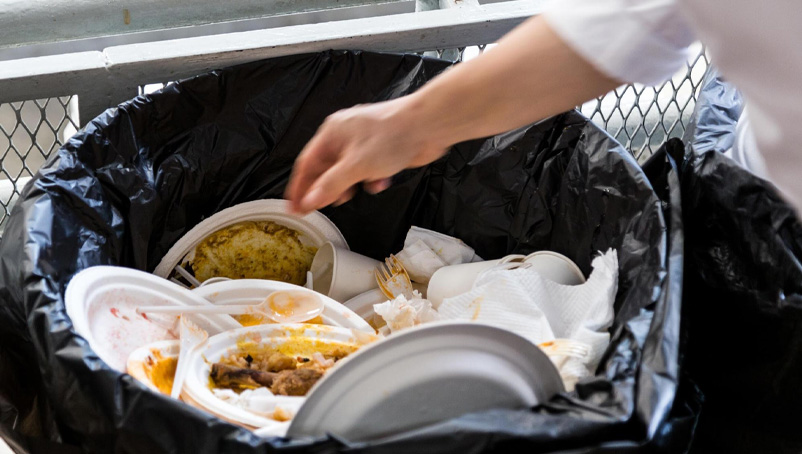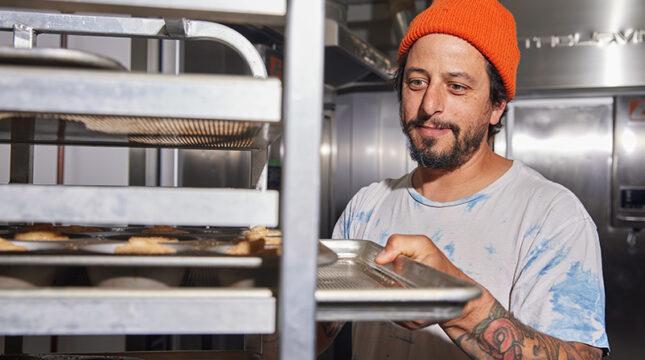Food waste happens every day. Whether it's spoiled food in the fridge, inedible parts of produce like peels and rinds, or an unfinished restaurant meal, discard is part of eating. But restaurant owners are taking some resourceful and creative action to reduce their total food waste and help make a potential impact on the environment.
Residential food waste is the number one source of food in landfills — around 44% according to an EPA report. But restaurants are the next most common food-wasters, generating nearly one-third of the country's total waste. While a small portion of restaurant food waste is composted or donated, most is disposed of via incineration or landfill.
To combat the problem, the U.S. Department of Agriculture and the Environmental Protection Agency have plans to cut food waste by half by 2030. But immediate action is necessary.
Data from the EPA's annual 2019 Wasted Food Report tracks what happens to food waste generated by restaurants in the United States. Here’s what it found:
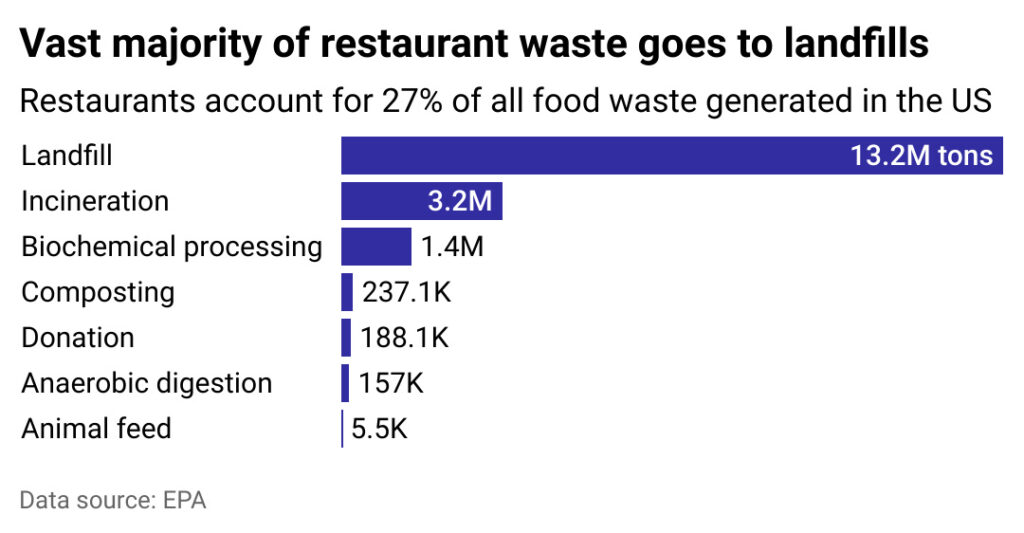
Restaurants are the second-largest source of food waste
Many restaurants are turning to alternative ways to dispose of food waste to reduce this impact, but most waste continues to go to landfills — upward of 13 million tons per year.
Some of these options are more helpful than others. Incineration, for instance, is a quick way to dispose of food waste without sending it to a landfill. But it’s inefficient and less beneficial than composting waste, which can help reduce greenhouse gas production.
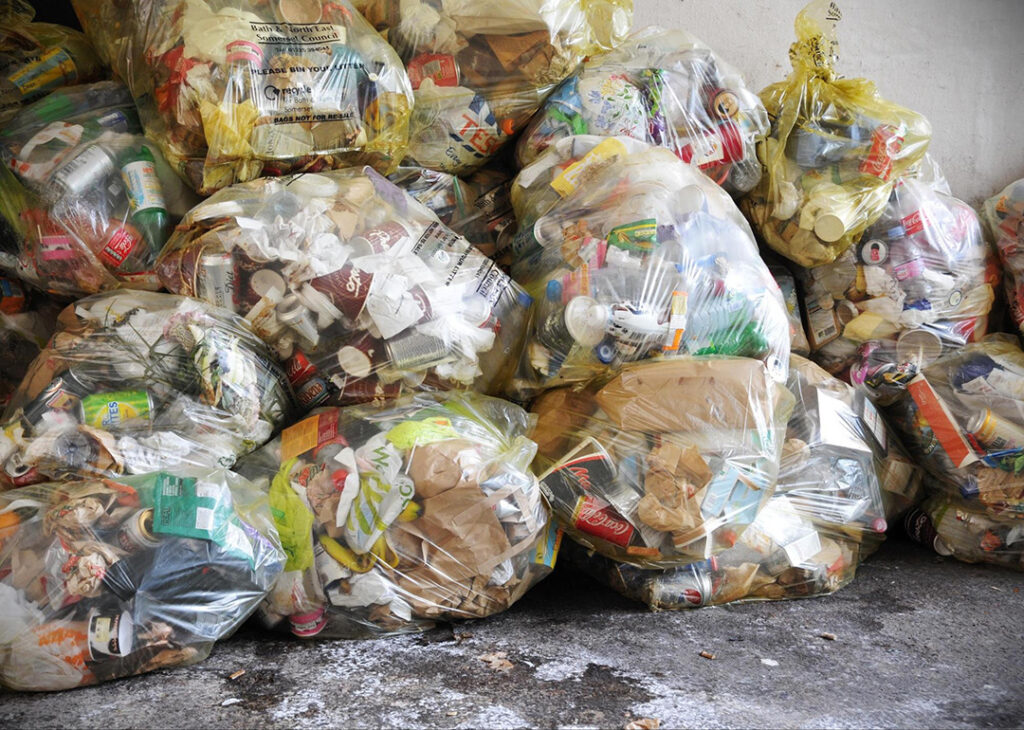
Why restaurants don’t donate more food
Donating unneeded food to shelters and food kitchens might seem like an obvious solution; it helps restaurants dispose of food waste while benefiting others. But this only makes up a small portion of all food waste disposal by restaurants each year.
Restaurants may avoid food donations for several reasons, including a fear of liability if someone at a donation site consumes spoiled or unsafe food and causes harm. The Bill Emerson Good Samaritan Act specifically addresses this concern, protecting organizations from liability when they donate to nonprofits.
Other barriers may include:
- The cost of transporting food.
- Keeping cooked restaurant food temperature-controlled.
- Perishable items that could expire before donation.
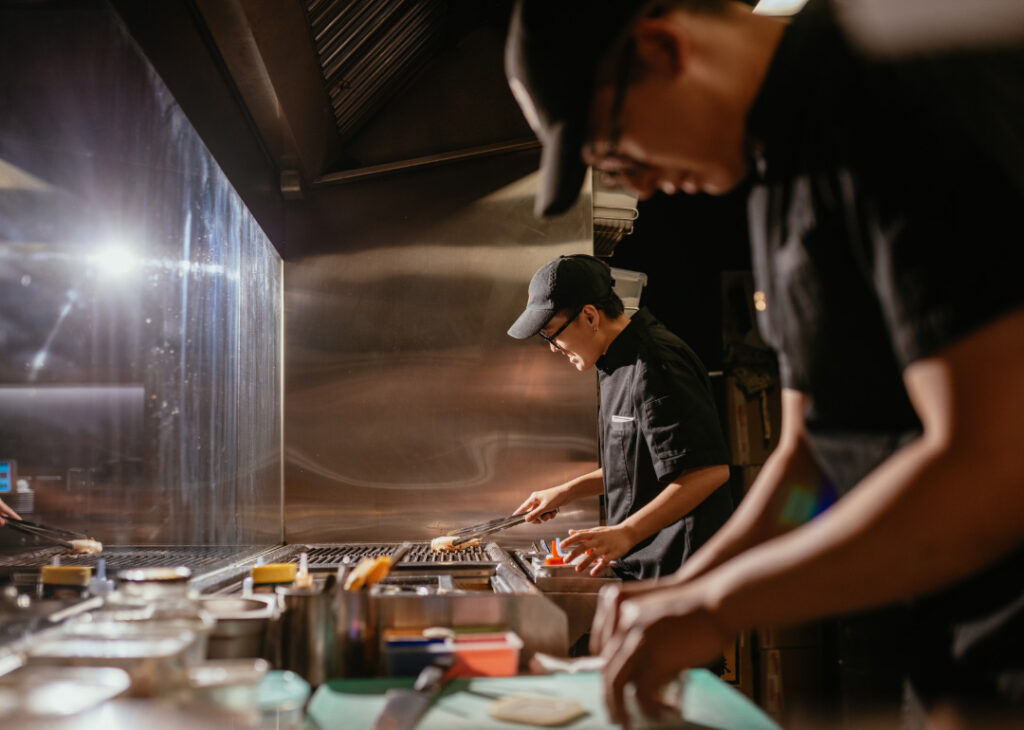
How restaurants reduce their food waste
Restaurants and food makers are getting creative as they try to reduce waste.
For example, ice cream maker Salt & Straw uses remnants of rice and grain from brewing beer to make chocolate barley milk ice cream. Pulp leftover from chocolate-making becomes an integral part of their chocolate gelato. "Instead of calling this food waste, we need to call it wasted food and start decreasing how much wasting we're doing," owner Tyler Malek told Fortune.
While restaurants like Salt & Straw find ways to upcycle food into more food, some restaurants send gallons of food off to become something else. Further Products, a Los Angeles–based household supplies brand, sources used vegetable oil from restaurants across the U.S. and turns it into soaps, lotions and soy candles.
In Royal Oak, Michigan, Johnny Prepolec, owner of Alchemi and Johnny's Speakeasy, measures every bit of wasted food leaving his doors daily. He's committed to keeping his restaurant's food out of landfills through the Make Food Not Waste pledge. Instead of tossing lemon rinds, they've become a staple in cleaning the kitchen. Steak trimmings avoid the trash can, and ultimately landfills, by making their way into the restaurant's meatballs.
Food waste is a 119-billion-pound per year problem, but every ounce that avoids landfills helps move us closer to a solution.
How NEXT can help your restaurant or food service business
NEXT makes it fast and easy to get the right insurance for your food business, including restaurants, caterers, bakeries, and cafes/coffee shops.
Our general liability, commercial property, workers’ compensation and commercial auto insurance coverage can help protect your food business from a variety of risks, including:
- Foodborne illness
- Equipment malfunction
- Property damage
- Injuries
- Workplace accidents
- Temporary business closures
- Auto accidents
You only pay for the coverage you need, and you can see your policy options in less than 10 minutes. A certificate of insurance, along with 24/7 access to your policy, is available as soon as you make a payment.
Get a free instant quote with NEXT.
